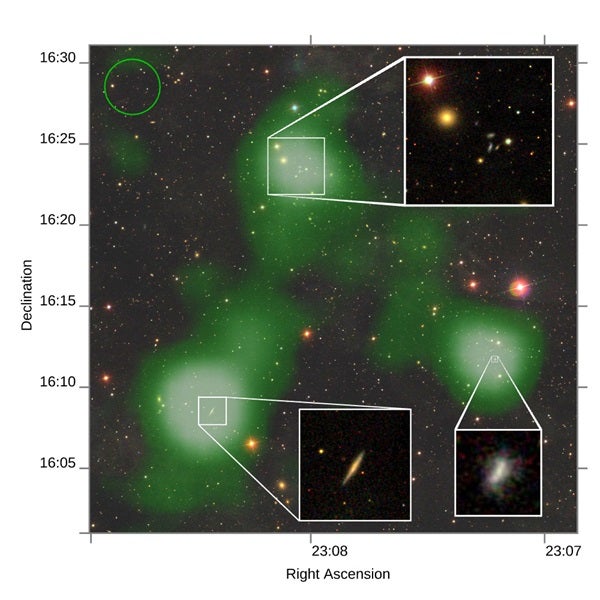The stream of atomic hydrogen is the largest known, a million light-years longer than a gas tail found in the Virgo Cluster by another Arecibo project a few years ago. “This was totally unexpected,” said Rhys Taylor from the Czech Academy of Sciences. “We frequently see gas streams in galaxy clusters where there are lots of galaxies close together but to find something this long and not in a cluster is unprecedented.”
It is not just the length of the stream that is surprising, but also the amount of gas found in it. “We normally find gas inside galaxies, but here half of the gas — 15 billion times the mass of the Sun — is in the bridge,” said Roberto Rodriguez from the University of Puerto Rico in Humacao. “That’s far more than in the Milky Way and Andromeda galaxies combined!”
The team is still investigating the origin of the stream. One notion surmises that the large galaxy at one end of the stream passed close to the group of smaller galaxies at the other end in the past and that the gas bridge was drawn out as they moved apart, while a second notion presumes that the large galaxy plowed straight through the middle of the group, pushing gas out of it. The team plans to use computer simulations to find out which of these ideas can best match the shape of the bridge that is seen with the Arecibo Telescope.
The bridge was found in data taken between 2008 and 2011 for the Arecibo Galaxy Environment Survey, which is using the power of the Arecibo Telescope to survey a large area of sky with a high level of sensitivity.










